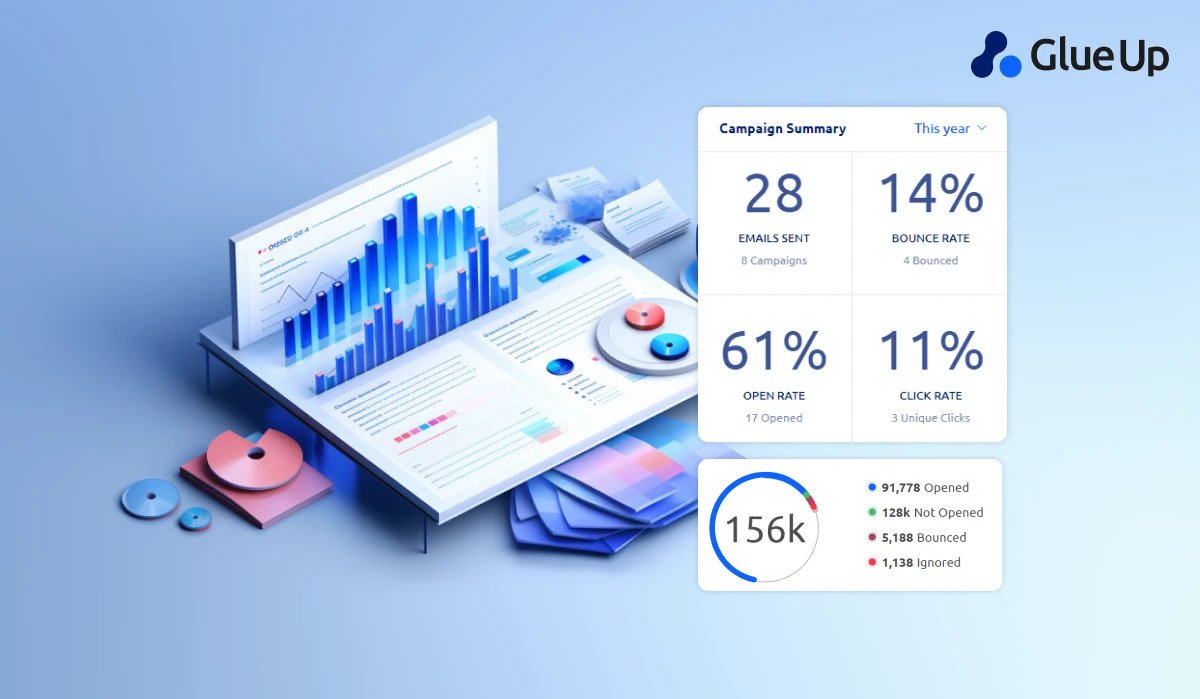
Associations can effectively engage with their members and convey important information through the use of email marketing. However, sending generic emails to all members may not yield the desired outcomes. To maximize engagement and ensure that messages resonate with recipients, associations can adopt an efficient email segmentation strategy.
By dividing their email list into segments and crafting targeted campaigns, associations can customize their messages according to specific segments and significantly enhance their engagement rates.
Quick Reads
- Introduction
- Understanding the Concept of Email Segmentation
- Advantages of Email Segmentation
- Identifying Criteria for Segmentation
- Developing Targeted Email Campaigns
- Personalization and Customization
- A/B Testing for Optimization
- Analyzing Email Performance
- Integrating Automation and Drip Campaigns
- Ensuring Data Accuracy and Privacy
- Optimizing Email Deliverability
Introduction
Associations play a pivotal role in connecting members, providing valuable resources, and fostering a sense of community. Email marketing enables associations to reach a broad audience and deliver relevant content directly to their members' inboxes.
However, a one-size-fits-all approach may not effectively engage members, resulting in lower open rates, click-through rates, and overall campaign effectiveness. This is where the concept of email segmentation comes into play.
Understanding the Concept of Email Segmentation
Email segmentation entails dividing an association's email list into smaller, targeted groups based on specific criteria. By implementing a well-planned email segmentation strategy, associations can create personalized and targeted campaigns that address the unique interests, needs, and preferences of their members.
This targeted approach allows associations to deliver content that is highly relevant to each segment, increasing the likelihood of engagement and response.
Advantages of Email Segmentation
The implementation of email segmentation offers several advantages for associations, like:
- Improved Engagement: Segmented campaigns, by delivering highly relevant content, have a greater chance of resonating with recipients, resulting in increased engagement and interaction.
- Higher Open Rates: Personalized subject lines and content can significantly improve open rates, as recipients are more likely to open an email that directly addresses their specific interests or needs.
- Increased Click-through Rates: Tailoring emails to specific segments makes recipients more inclined to click on links and take desired actions, leading to higher click-through rates and conversions.
- Enhanced Member Satisfaction: By providing personalized and valuable content, associations can strengthen their relationship with members, enhancing member satisfaction and fostering loyalty.
Identifying Criteria for Segmentation
To effectively segment an email list, associations must first identify the criteria they will use to divide their members. Some common segmentation criteria include:
- Membership Level: Segmenting based on membership type allows associations to deliver content that aligns with the benefits and interests specific to each membership level.
- Geographic Location: Associations with members spread across different regions can tailor their emails to address location-specific events, regulations, or opportunities.
- Industry or Specialty: Segmenting by industry or specialty enables associations to deliver targeted content that is relevant to the specific interests and needs of different professional groups.
- Engagement Level: Segmenting based on engagement level allows associations to send re-engagement campaigns to inactive members or exclusive content to highly engaged members.
By carefully considering these segmentation criteria, associations can create segments that align with their goals and effectively deliver personalized content to each segment.
Developing Targeted Email Campaigns

Once the segmentation criteria are defined, associations can begin developing targeted email campaigns for each segment. These campaigns should focus on delivering content that directly addresses the interests and pain points of the specific segment.
Associations can utilize engaging language, compelling visuals, and persuasive calls to action to encourage recipient interaction and drive desired outcomes.
Personalization and Customization
Associations can take email segmentation a step further by leveraging personalization and customization techniques.
Personalization involves addressing recipients by their names and utilizing dynamic content to tailor the email content based on the recipient's segment. Customization allows associations to create unique and relevant experiences for each segment by delivering content that is specific to their interests and preferences.
A/B Testing for Optimization
To continuously improve email performance, associations should conduct A/B testing. This involves creating two versions of an email and testing different elements, such as subject lines, layouts, or calls-to-action, to determine which variation generates higher engagement and conversions.
Analyzing Email Performance

Regularly analyzing email performance is crucial for understanding what works and identifying areas that need improvement. Associations should track key metrics such as open rates, click-through rates, and conversions to identify trends and patterns.
This data-driven approach empowers associations to make informed decisions, refine their segmentation strategy, and create more effective campaigns in the future.
Integrating Automation and Drip Campaigns
Associations can streamline their email marketing efforts by integrating automation and drip campaigns. Automation enables timely and personalized communication, such as sending welcome emails to new members or birthday greetings.
Drip campaigns deliver a series of pre-scheduled emails over time, nurturing leads, providing educational content, or promoting upcoming events. These automated campaigns help associations maintain engagement and build stronger relationships with their members.
Ensuring Data Accuracy and Privacy

Data accuracy and privacy are crucial considerations when implementing email segmentation strategies. Associations must ensure that member data is accurate, up-to-date, and securely stored.
Complying with data protection regulations, such as GDPR or CCPA, is essential to maintain trust and protect members' privacy. Associations should also provide clear opt-in and opt-out options for recipients to effectively manage their preferences.
Optimizing Email Deliverability
To ensure that emails reach the intended recipients' inboxes, associations need to optimize email deliverability. This involves maintaining a clean email list, monitoring sender reputation, and following email deliverability best practices.
Associations should avoid spam triggers, use reputable email service providers, and regularly review and update their email lists to reduce bounce rates and improve overall deliverability.
Conclusion
Email segmentation is a powerful strategy that can significantly enhance engagement and campaign effectiveness for associations. By dividing their email list into targeted segments and delivering personalized content, associations can ensure that their messages resonate with members, leading to higher open rates, click-through rates, and conversions.
Implementing segmentation strategies, leveraging personalization techniques, and continuously analyzing email performance will help associations unlock the full potential of their email marketing efforts.



